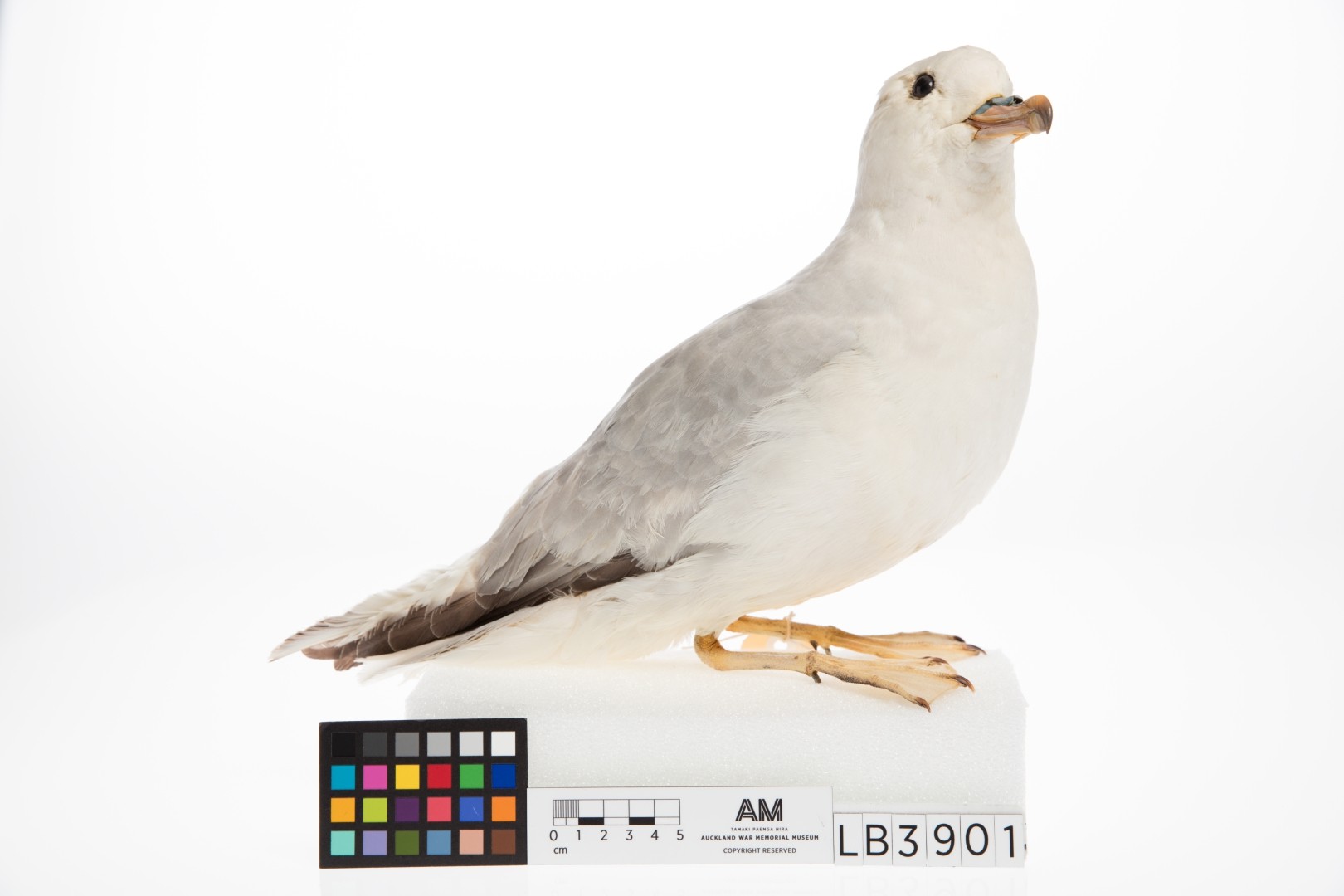Southern Fulmar
A species of Fulmars Scientific name : Fulmarus glacialoides Genus : Fulmars
Southern Fulmar, A species of Fulmars
Botanical name: Fulmarus glacialoides
Genus: Fulmars
Content
Description General Info
Description
It is a fairly large, bulky petrel, 45 to 50 cm (18–20 in) long with a wingspan of 110 to 120 cm (43–47 in). The male has an average weight of 795 g (28.0 oz) while the smaller female weighs around 740 g (26 oz). These weights increase to 1,005 and 932 g (35.5 and 32.9 oz) at the start of a shift incubating the eggs. The male has a wing length of 34 cm (13 in), bill length of 44.6 mm (1.76 in), tarsus length of 52.1 mm (2.05 in) and tail length of 12.4 cm (4.88 in). The female has a wing length of 33.9 cm (13.3 in), bill length of 43 mm (1.69 in), tarsus length of 51.5 mm (2.03 in) and tail length of 12.1 cm (4.8 in). The bird flies with a mixture of shallow flaps and long glides, often looking down to scan the water. The wings are fairly broad and rounded and are held stiff. The plumage is mainly pale silvery-grey above and white below. The head is white with a pale grey crown. The wingtips are blackish with a large white patch and the wings have a dark rear edge. The legs and feet are pale blue. The bill is pink with a black tip and dark bluish naricorns. First-year birds have a more slender bill than the adults. It is usually silent but has loud, cackling calls which are uttered at the nest or in feeding flocks. Courting birds produce soft droning and guttural croaking calls. 
Size
50 cm
Life Expectancy
45 years
Nest Placement
Cliff
Feeding Habits
Southern Fulmar primarily feeds on krill, crustaceans, and small fish. Southern Fulmar forages by surface seizing or diving. Southern Fulmar exhibits a preference for abundant, swarming prey, displaying specialized hunting techniques to effectively capture this food.
Habitat
The southern Fulmar is an avian species found in marine and pelagic habitats, often associated with the frigid waters adjacent to pack ice. This bird prefers the subzero temperatures typically ranging from -1.5°C to 0.5°C for breeding and feeding. Geographically, southern Fulmar inhabit broad regions of the Southern Hemisphere's oceans, particularly in areas where cold currents are prominent. Their breeding sites are predominantly steep, north-facing rocky slopes and cliffs, occasionally extending well inland, as observed in parts of Antarctica.
Dite type
Piscivorous
General Info
Feeding Habits
Bird food type
Distribution Area
There are colonies on a number of the islands around Antarctica such as the South Sandwich Islands, South Orkney Islands, South Shetland Islands, Bouvet Island, and Peter I Island. The bird also breeds at several sites along the mainland coast of Antarctica. At sea, it mainly occurs along the outer edge of the pack ice in summer with water temperatures of −1.5 to 0.5 °C. In winter, it regularly ranges north to around 40°S latitude. It occurs further north in the cool waters of the Humboldt Current, reaching Peru. Small numbers are seen off the coasts of South Africa, southern Australia and New Zealand. Many birds can be washed up on beaches after storms. There are several unconfirmed reports from the west coast of North America. It is a common species with a population of at least 4 million individuals. About a million pairs breed on the South Sandwich Islands alone. The species is not thought to be at risk of extinction and is classed as least concern by Birdlife International. 
Scientific Classification
Phylum
Chordates Class
Birds Order
Albatrosses and Petrels Family
Shearwaters and petrels Genus
Fulmars Species
Southern Fulmar 